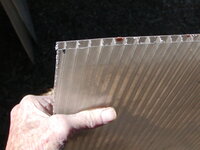Dragron_ heart
Chirping
I have to insulate a portion of my chicken run. I have checked all over the internet and apparently I am the only person on earth who has ever had to do this. My problem is that I basically know what to do, but I don't know what kind of insulation would be safe for the chickens if they got to it. Help!




